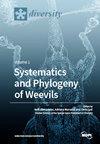在撒哈拉以南非洲与水稻鞘腐病有关的镰刀菌和芽孢菌
IF 2.1
3区 生物学
Q2 BIODIVERSITY CONSERVATION
引用次数: 0
摘要
在世界范围内,镰孢菌和镰孢菌通常被认为是水稻鞘腐病的致病因子。然而,在撒哈拉以南非洲(SSA)国家,人们对其遗传、致病性和毒素多样性的了解有限,在这些国家已经观察到该病的发病率不断上升。在这项研究中,从马里、尼日利亚和卢旺达的水稻研究项目和农民田地中获得了70株真菌分离株。因此,进行了广泛的比较分析,以评估它们的遗传,致病和毒素多样性。利用翻译延伸因子(EF-1α)区对镰刀菌进行鉴定,利用内部转录间隔区(ITS)和肌动蛋白编码区对镰刀菌进行鉴定。系统发育分析发现有4个镰刀菌种复合体。尼日利亚的优势复合体是由海南镰刀菌(F. hainanense)、苏拉威镰刀菌(F. sulawesiense)、pernambucatum和tanahbumbuense组成的镰刀菌(F. incarnatum)和卢旺达的镰刀菌(F. incarnatum)。fujikuroi镰刀菌种群(Fusarium species complex, FFSC)在卢旺达和马里以F. andiyazi、F. madaense和F. casha为主,在马里以F. annulatum和F. nygamai为主。F. marum是在尼日利亚发现的。此外,在卢旺达和马里分别发现了尖孢镰刀菌种复合体(FOSC)成员F. callistephi和F. triseptatum。在卢旺达获得了2株属于sambucinum Fusarium species complex (FSAMSC)的金秋镰刀菌-mearnsii分离株。先前划分为3个系统发育类群的Sarocladium分离株被分解为3个种,分别是attenuatum、oryzae和sparsum。卢旺达以衰减S.为主,尼日利亚以稻谷S.和sparsum S.为主。此外,还对非洲水稻中心(AfricaRice)发布的水稻品种FARO44进行了对4种镰刀菌复合体和3种镰刀菌分离株的敏感性试验。所有被评估的分离株都能诱发典型的鞘腐病症状,尽管疾病发展水平不同。此外,采用液相色谱-串联质谱法(LC-MS/MS)测定了镰刀菌种体外真菌毒素的变异。在体外真菌毒素分析中观察到区域差异。在测试的46个分离株中,有19个能够产生一到四种真菌毒素。值得注意的是,产自尼日利亚伊巴丹的两株海南镰刀菌具有很高的玉米赤霉烯酮(ZEN)产量,而产自马里的尼加马镰刀菌产高量的伏马菌素。据我们所知,这项研究似乎是第一次阐明在SSA选定国家与水稻鞘腐病复合体相关的镰刀菌物种的遗传、致病和产毒多样性。本文章由计算机程序翻译,如有差异,请以英文原文为准。
Fusarium and Sarocladium Species Associated with Rice Sheath Rot Disease in Sub-Saharan Africa
Sarocladium and Fusarium species are commonly identified as causal agents of rice sheath rot disease worldwide. However, limited knowledge exists about their genetic, pathogenic, and toxigenic diversity in sub-Saharan African (SSA) countries, where an increasing incidence of this disease has been observed. In this study, seventy fungal isolates were obtained from rice plants displaying disease symptoms in rice research programs and farmer fields in Mali, Nigeria, and Rwanda. Thus, an extensive comparative analysis was conducted to assess their genetic, pathogenic, and toxigenic diversity. The Fusarium spp. were characterized using the translation elongation factor (EF-1α) region, while a concatenation of Internal Transcribed Spacer (ITS) and Actin-encoding regions were used to resolve Sarocladium species. Phylogenetic analysis revealed four Fusarium species complexes. The dominant complex in Nigeria was the Fusarium incarnatum-equiseti species complex (FIESC), comprising F. hainanense, F. sulawesiense, F. pernambucatum, and F. tanahbumbuense, while F. incarnatum was found in Rwanda. The Fusarium fujikuroi species complex (FFSC) was predominant in Rwanda and Mali, with species such as F. andiyazi, F. madaense, and F. casha in Rwanda and F. annulatum and F. nygamai in Mali. F. marum was found in Nigeria. Furthermore, Fusarium oxysporum species complex (FOSC) members, F. callistephi and F. triseptatum, were found in Rwanda and Mali, respectively. Two isolates of F. acasiae-mearnsii, belonging to the Fusarium sambucinum species complex (FSAMSC), were obtained in Rwanda. Isolates of Sarocladium, which were previously classified into three phylogenetic groups, were resolved into three species, which are attenuatum, oryzae, and sparsum. S. attenuatum was dominant in Rwanda, while S. oryzae and S. sparsum were found in Nigeria. Also, the susceptibility of FARO44, a rice cultivar released by Africa Rice Centre (AfricaRice), was tested against isolates from the four Fusarium species complexes and the three Sarocladium species. All isolates evaluated could induce typical sheath rot symptoms, albeit with varying disease development levels. In addition, liquid chromatography-tandem mass spectrometry (LC-MS/MS) was used to determine variation in the in vitro mycotoxins of the Fusarium species. Regional differences were observed in the in vitro mycotoxins profiling. Out of the forty-six isolates tested, nineteen were able to produce one to four mycotoxins. Notably, very high zearalenone (ZEN) production was specific to the two F. hainanense isolates from Ibadan, Nigeria, while Fusarium nygamai isolates from Mali produced high amounts of fumonisins. To the best of our knowledge, it seems that this study is the first to elucidate the genetic, pathogenic, and toxigenic diversity of Fusarium species associated with the rice sheath rot disease complex in selected countries in SSA.
求助全文
通过发布文献求助,成功后即可免费获取论文全文。
去求助
来源期刊

Diversity-Basel
Environmental Science-Ecological Modeling
CiteScore
3.40
自引率
12.50%
发文量
925
审稿时长
11 weeks
期刊介绍:
Diversity (ISSN 1424-2818) is an international and interdisciplinary journal of science concerning diversity concept and application, diversity assessment and diversity preservation. It is focused on organismic and molecular diversity. It publishes reviews, regular research papers and short notes in the regular issues. Related news and announcements are also published. Our aim is to encourage scientists to publish their experimental and theoretical results in as much detail as possible. Therefore, there is no restriction on the length of the papers. Full experimental details must be provided so that the results can be reproduced.
 求助内容:
求助内容: 应助结果提醒方式:
应助结果提醒方式:


